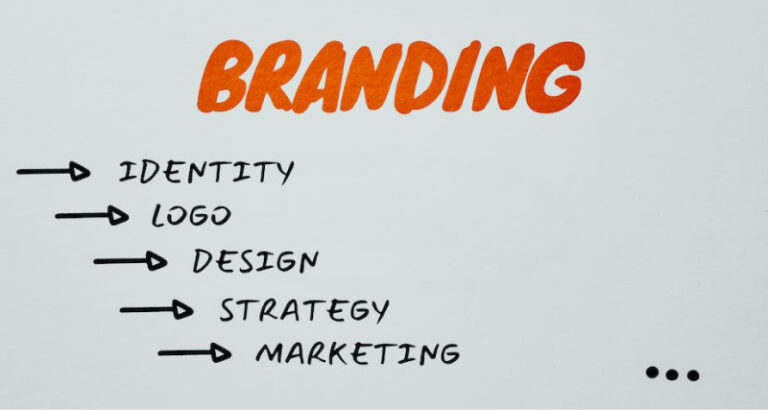In the dynamic world of brand management, the power of a well-crafted communication strategy cannot be overstated. As we delve into the intricacies of modern branding, it becomes increasingly clear that effective communication is not just a supplementary component but the backbone of brand success.
In the current ‘digital-first’ environment, many brands rush to establish their online presence, often mistaking it for having a true brand identity. It’s crucial to understand that presence and identity are distinct concepts in the realm of branding. While establishing an online presence is akin to setting up a shop, building a brand identity is more akin to deciding what your shop represents, what it sells, and how it engages with customers.
It’s like coaching a sports team — your presence means you have a group of players. Without an identity, for example, building and nuturing the team with a philosophy and a guideline to adhere to, it is a tough ask for the players to have chemistry and play well. Hence, this is why an identity and a communication strategy is important to nuture these players, i.e. your online infrastructures, to succed.
The Essential Role of a Brand Communication Strategy
A brand communication strategy is more than just a guideline for your marketing team; it is a comprehensive approach that defines how your brand interacts with its audience across every touchpoint. From social media interactions to traditional advertising, every message your brand sends out contributes to the narrative you’re building in the minds of your consumers.
We sought out to unveil the multifaceted benefits of having a robust communication strategy, highlighting its impact on brand identity, customer engagement, marketing effectiveness, and overall business growth.
1. Brand Identity: The Foundation of Your Communication Strategy
Brand identity is more than a logo or a tagline; it’s the comprehensive representation of a brand’s essence, values, and personality. Here’s a deeper dive into the crucial elements of brand identity and their role in a successful communication strategy:
Logo, Tagline, and Brand Colors
The logo, tagline, and brand colors are the most visible components of your brand identity. They create an immediate visual connection with the audience, often being the first point of interaction. A well-designed logo should be memorable and reflective of the brand’s ethos. Similarly, the tagline should encapsulate the brand’s mission in a concise and catchy phrase. Brand colors play a significant role in evoking emotions and setting the mood associated with the brand. These elements should work in harmony to create a strong visual impact and aid in brand recall.
Brand Voice and Mission Statement
The brand voice encompasses the style, tone, and manner of communication, aligning with the brand’s personality. Whether it’s professional, friendly, witty, or serious, the brand voice should be consistent across all communication channels. This consistency helps in building trust and establishing a relationship with the audience. The mission statement, on the other hand, succinctly conveys the brand’s purpose and core values. It’s a guiding light for all brand activities and communicates what the brand stands for to its audience.
2. Marketing Channels: The Vehicles for Your Message
Social Media and Email Marketing
In the realm of brand communication, social media and email marketing are invaluable for direct engagement with the audience. Social media platforms offer a dynamic space for interactive and personalized communication, allowing brands to connect with their audience in real time. Email marketing, on the other hand, provides a more direct and personal way to reach out to customers, offering tailored content and updates. These channels are essential for building a relationship with your audience and keeping them engaged with your brand.
PR, Advertising, and Content Marketing
Public relations, traditional advertising, and content marketing each play a unique role in a holistic communication strategy. PR focuses on building and maintaining a positive public image, often through media relations and crisis management. Advertising, whether online or offline, is a powerful tool for reaching a broad audience and promoting brand visibility. Content marketing, through blogs, videos, and other forms of content, provides valuable information to the audience, establishing the brand as a thought leader in its field.
Practical Tips
- For social media, focus on creating engaging and shareable content that resonates with your audience.
- In email marketing, segment your audience for personalized communication and regularly test different formats and contents to see what works best.
- Use PR to tell your brand’s story and manage its reputation effectively.
- Combine creativity with strategic planning in advertising to capture your audience’s attention.
- Provide valuable and informative content in your content marketing efforts to build trust and authority.
3. Understanding the Target Audience
Demographics and Psychographics
The cornerstone of any effective brand communication strategy is a deep understanding of your target audience. You would have notice we emphasise on a user persona frequently — in both must dos to elevate engagement and the art of storytelling. This is because to truly resonate with your audience, you need to delve deeper into psychographics, which cover psychological attributes like interests, values, lifestyle, and attitudes. By integrating both demographic and psychographic profiles into your strategy, you can tailor your communication to reflect the needs and aspirations of your audience, making your brand’s message more relevant and impactful.
Building Loyalty
The ultimate goal of understanding and addressing your audience’s needs is to foster brand loyalty. Consistent and relevant messaging plays a pivotal role in this. When your audience feels that your brand understands and caters to their needs, they are more likely to develop a long-term relationship with your brand. Loyalty is not just about repeated purchases; it’s about creating brand advocates who believe in your brand and what it stands for.
4. Crafting the Message: The Art of Communication
Clarity and Consistency
In the art of brand communication, clarity and consistency are indispensable. Every message your brand sends out should be clear in its intent and consistent with your overall brand message. This consistency across all channels – be it social media, email, advertising, or PR – reinforces your brand identity and helps in building trust with your audience. A consistent message ensures that regardless of how or where a customer interacts with your brand, they receive the same core message, which strengthens brand recall and recognition.
Relevance and Emotional Appeal
To truly connect with your audience, your messaging must be relevant and emotionally engaging. This means understanding what matters to your audience and how your brand can play a role in addressing these concerns or aspirations. Emotionally appealing content strikes a chord with your audience, creating a deeper, more personal connection. Whether it’s joy, trust, inspiration, or comfort, messages that evoke emotions are more likely to be remembered and acted upon.
You can read more on how emotional appeal works hand in hand when you narrate your brand story.
Practical Tips on to Creating an Effective Brand Communication Strategy
- Define Your Core Message: Start by clearly defining the core message that encapsulates your brand’s values, mission, and what sets it apart.
- Understand Your Audience: Develop a deep understanding of your audience’s demographics, psychographics, and preferences to tailor your message effectively.
- Choose the Right Channels: Select the most appropriate channels for your message, considering where your target audience is most active and receptive.
- Develop a Content Plan: Create a plan that outlines what type of content will be shared on each channel and how it ties back to your core message.
- Integrate Storytelling: Use storytelling to make your messages more engaging and memorable.
- Ensure Consistency: Maintain consistency in your messaging across all channels to reinforce brand identity and message.
- Monitor and Adapt: Continuously monitor the effectiveness of your communication and be ready to adapt based on feedback and changing audience needs.
5. Measuring Success: Analytics and Feedback
In the realm of brand communication, success is not just about broadcasting your message; it’s about understanding how that message is received and engaging in a two-way conversation. Here’s how you can measure the success of your brand communication strategy:
Engagement and Conversion Rates:
- Engagement Rate: This metric indicates how well your audience interacts with your content. High engagement rates on social media posts, emails, or blogs suggest that your message resonates with your audience.
- Conversion Rate: This is a crucial metric that shows the percentage of audience members who take the desired action after encountering your communication. A high conversion rate often indicates effective communication that prompts action.
Customer Feedback:
Listening to customer feedback is vital for continuous improvement. Whether it’s through surveys, reviews, or direct customer interactions. These feedback provides invaluable insights into what your audience likes, dislikes, and expects from your brand.
Finally, Staying abreast of market trends ensures your communication strategy remains relevant and effective. Regular ROI analysis helps in understanding the financial impact of your communication efforts. Hence, enabling informed decisions on where to invest for maximum return.
Case Study – Grab
A cohesive brand communication strategy is essential for building a strong, recognizable, and beloved brand. Grab, the Singapore-based tech giant, serves as a stellar example of this. Starting as a ride-hailing service, Grab expanded into a multifaceted platform offering food delivery, digital payments, and more. This transformation is supported by their adept communication strategies. In this article, Grab highlighted effective promotional strategies for business to thrive.
- Localized Campaigns: Grab successfully localizes its campaigns to resonate with different audiences across Southeast Asia. Their messaging often incorporates local languages, cultural nuances, and community-centric values. This therefore helps in creating a strong connection with a diverse user base.
- Customer-Centric Messaging: Grab’s communication consistently focuses on customer convenience and safety, whether it’s through their app features or service offerings. This approach establishes trust and reliability in the brand.
- Adapting to Market Changes: During the COVID-19 pandemic, Grab quickly adapted its communication to emphasize health and safety protocols. They reassured customers and pivoted their services to include “contactless” deliveries and expanded digital payment options.
- Engaging Digital Presence: Grab maintains an engaging and informative digital presence across various platforms, from social media to their app.
These strategic communication efforts have not only aided Grab in expanding its services but have also entrenched its position as a market leader.
Now it’s your turn. Evaluate your brand communication strategy and consider how integrating clear, consistent, and audience-tailored elements can elevate your brand presence. If you’re looking for expertise in refining your strategy, we’re here to help. Reach out for a consultation or explore our resources to start enhancing your brand communication today. Let’s ensure your brand not only speaks but also resonates with its audience.




